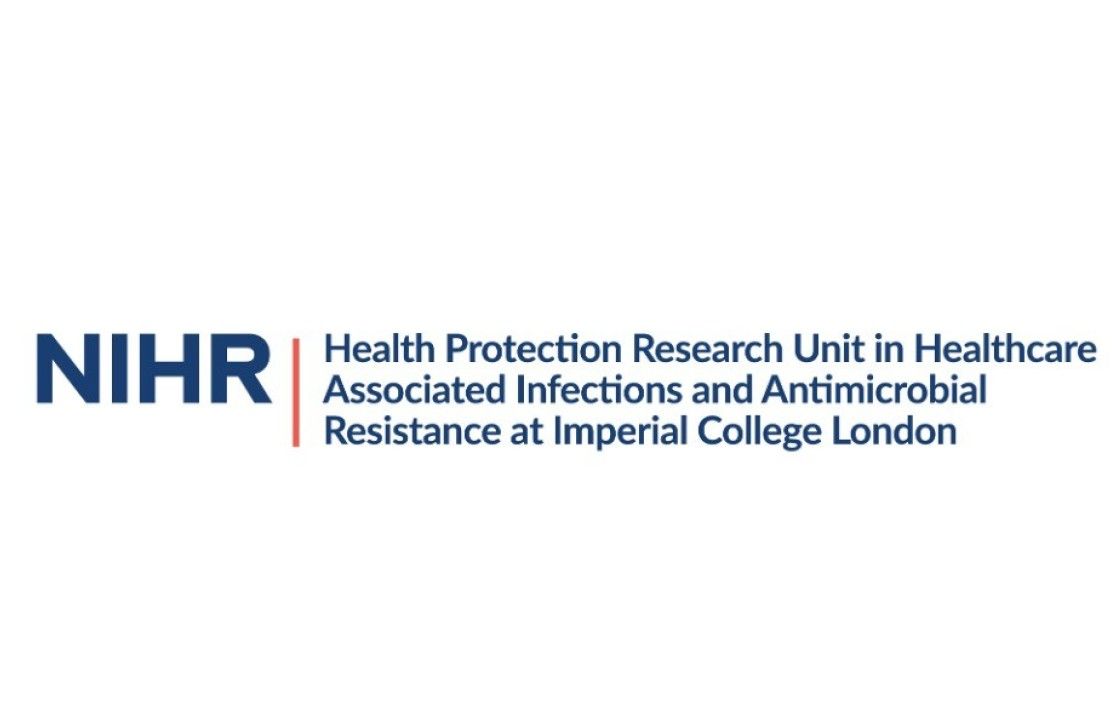Results
- Showing results for:
- Reset all filters
Search results
-
Journal articleMicallef C, Kildonavaciute K, Castro Sanchez EM, et al., 2016,
Patient and public understanding and knowledge of antimicrobial resistance and stewardship: should public campaigns change focus?
, Journal of Antimicrobial Chemotherapy, Vol: 72, Pages: 311-314, ISSN: 1460-2091BackgroundThe rising global tide of antimicrobial resistance is a well-described phenomenon. Employing effective and innovative antimicrobial stewardship strategies is an essential approach to combat this public health threat. Education of the public and patients is paramount to enable the success of such strategies.MethodsA panel of hospital multidisciplinary healthcare professionals was set up and a short quiz containing true/false statements around antimicrobial stewardship and resistance was designed and piloted. An educational leaflet with the correct replies and supporting information was also produced and disseminated. Participants were recruited on a single day (18 November 2015) from the hospital outpatient clinics and the hospital outpatient pharmacy waiting room.ResultsOne hundred and forty-five completed quizzes were returned, providing a total of 1450 answers. Overall, 934 of 1450 (64%) statements were scored correctly whilst 481 (33%) were scored incorrectly; 35 (3%) statements were left unscored. We speculate that these results may demonstrate that respondents understood the statements, as only a small proportion of statements were left unanswered. The question dealing with the definition of antimicrobial resistance and the question dealing with the definition of antimicrobial stewardship obtained the most incorrect replies (85% and 72%, respectively). However, a specific factual recall question regarding only one microorganism (MRSA) received the most correct responses (99%).ConclusionsWe describe a simple, innovative method of engagement with patients and the general public to help educate and disseminate important public health messages around antimicrobial resistance and stewardship. We also identified the need for public health campaigns to address the knowledge gaps found around this topic.
-
Journal articleRawson T, Moore L, Gill D, et al., 2016,
Promoting medical student engagement with antimicrobial stewardship through involvement in undergraduate research
, Journal of Infection, Vol: 74, Pages: 200-202, ISSN: 1532-2742The National Health Service recognises the importance of research, teaching, and training tothe future success of the organisation and medical students are expected to qualify with thenecessary clinical, professional, and academic skills to support this. There is a wide variationin the level of cross-specialty engagement with Antimicrobial Stewardship (AMS) &Antimicrobial resistance (AMR) research at UK and international state-of-the-artconferences, with a heterogeneous level of importance also attributed amongst undergraduateand postgraduate training pathways across clinical medicine. It therefore seems apparent thatthe AMS-AMR agenda needs to be promoted from within specialties, rather than being‘pushed’ on them as an external agenda, to promote broad ownership and capacity within allclinical specialties that use antimicrobials. This must start early during undergraduate medicaltraining. We investigated whether the use of an online platform designed to facilitate medicalstudent research projects could be utilised to promote undergraduate engagement with AMSAMRat Imperial College School of Medicine between July 2015 and 2016. During thisperiod 12 applicants were appointed to 11 of the 13 advertised projects. So far, studentsundertaking these projects have achieved: 1 peer-reviewed publication, 3 national oralpresentations, 1 national prize, 1 international poster presentation, 3 national posterpresentations, and 2 further manuscripts are currently under peer-review. Furthermore,despite the students’ broad career interests there has been a high retention rate with studentsrequesting involvement in further AMS-AMR related activities. Further longitudinalassessment of this tool for promoting undergraduate engagement with AMS-AMR research isnow being explored.
-
Journal articleVella V, Aylin PP, Moore L, et al., 2016,
Bed utilisation and increased risk of Clostridium difficile infections in acute hospitals in England in 2013/2014.
, BMJ Quality & Safety, ISSN: 2044-5423BACKGROUND: The study aimed to identify thresholds for hospital bed utilisation which are independently associated with significantly higher risks for Clostridium difficile infections (CDI) in acute hospitals in England. METHOD: A retrospective analysis was carried out on reported data from the English National Health Service (NHS) for the financial year 2013/2014. Reported rates of CDI were used as a proxy for hospital infection rates in acute NHS hospital trusts. Multivariate linear regression was used to assess the relationship between bed utilisation values and CDI controlling for confounding factors. Hospitals were finally plotted in a Pabon Lasso graph according to their average bed occupancy rate (BOR) and bed turnover rate (BTR) per year to visualise the relationship between bed utilisation and CDI. RESULTS: Among English hospital NHS trusts, increasing BTR and decreasing BOR were associated with a decrease in CDI. However, this effect was not large, and patient mix had a larger impact on CDI rates than bed utilisation. CONCLUSIONS: While policymakers and managers wishing to target healthcare providers with high CDI rates should look at bed utilisation measures, focusing on these alone is unlikely to have the desired impact. Instead, strategies to combat CDI must take a wider perspective on contributory factors at the institutional level.
-
Journal articleCastro Sanchez EM, Moore LSP, Husson, et al., 2016,
What are the factors driving antimicrobial resistance? Perspectives from a public event in London, England
, BMC Infectious Diseases, Vol: 16, ISSN: 1471-2334BackgroundAntimicrobial resistance is driven by multiple factors. Resolving the threat to human and animal health presented by drug-resistant infections remains a societal challenge that demands close collaboration between scientists and citizens. We compared current public views about key contributing factors to antimicrobial resistance with those expressed by experts.MethodsOverarching factors contributing to antimicrobial resistance were identified following a review of literature. The factors were then described in plain language and attached to ballot boxes at a public engagement event organised by a university. Responses to each factor were counted at the end of the event.ResultsFour hundred five responses were received from 3750 visitors (11 % response rate). Nearly half of responses (192/405, 47 · 4 %) considered the misuse/overuse of antibiotics in humans as the main determinant of antimicrobial resistance. The misuse of antibiotics in animal health obtained 16 · 3 % (66/405) responses. However, the lack of quick tests to diagnose infections received 10/405 votes (2 · 47 %), and the lack of effective vaccines received one vote (0 · 25 %).ConclusionsThe majority of responses ascribed the emergence of drug-resistant infections to the misuse of antibiotics in human and animals. Suboptimal dosing, availability of diagnostics and environmental contamination were considered less influential on the development of antimicrobial resistance. The growing recognition of broader multifaceted drivers of drug resistance by experts is not yet echoed in the public mind.
-
Journal articleGharbi M, Moore LSP, Castro Sanchez E, et al., 2016,
A needs assessment study for optimising prescribing practice in secondary care junior doctors: The Antibiotic Prescribing Education among Doctors (APED)
, BMC Infectious Diseases, Vol: 16, ISSN: 1471-2334Introduction: Appropriate antimicrobial prescribing is essential for patient care, yet up tohalf of antimicrobial prescriptions written in the UK are sub-optimal. Improvingprescriber education has recently been promoted as a mechanism to optimiseantimicrobial use, but identification of key learning objectives to facilitate this is so farlacking. Using qualitative methods we investigated junior doctor knowledge, attitudes,and behaviours around antimicrobial prescribing to identify key areas to address infuture educational programmes.Methods: A cross-sectional survey of qualified doctors in training in West London wasundertaken exploring antimicrobial prescribing practices and educational needs.Results: Among 140 junior doctors from 5 London hospitals, a third (34%) reportedprescribing primarily unsupervised, and two thirds (67%) reported difficulties obtainingprescribing support outside of hours. 20% stated not feeling confident in writing anantimicrobial prescription, but confidence was increased through having confirmatorydiagnostic results (24%) and obtaining advice from a senior doctor (26%); whether thissenior was from their own specialty, or an infection-specialist, varied significantly(p<0.01) by experience. Only a small percentage (5-13%; depending on number ofyears post-qualification) of participants stated their previous antimicrobial educationwas effective. 60% of those in their first year post qualification reported wanting furthereducation in antimicrobial prescribing, rising to 74% among more experienced juniordoctors. Specific areas of educational need identified were (i) principles of antimicrobialprescribing, (ii) diagnosis of infections, (iii) clinical review of patients with infections, (iv)prescribing in the context of antimicrobial resistance, and (v) laboratory testing and testresults.Discussion: A significant proportion of junior doctors report lone prescribing ofantimicrobials in the context of low self-perceived confidence and knowledge in
-
Journal articleBoyd S, Charani E, Lyons T, et al., 2016,
Information provision for antibacterial dosing in the obese patient: a sizeable absence?
, Journal of Antimicrobial Chemotherapy, ISSN: 1460-2091 -
Journal articleBoyd S, Rawson T, Moore L, et al., 2016,
Preventing bloodstream infection in children: What's the CATCH?
, The Lancet, Vol: 388, Pages: 462-463, ISSN: 0140-6736 -
Journal articleRawson TM, Butters TP, Moore LS, et al., 2016,
Exploring the coverage of antimicrobial stewardship across UK clinical postgraduate training curricula
, Journal of Antimicrobial Chemotherapy, Vol: 71, Pages: 3284-3292, ISSN: 1460-2091OBJECTIVES: Antimicrobial resistance (AMR) is a global political and patient safety issue. With ongoing strategic interventions to improve the shape of UK postgraduate clinical training, ensuring that all clinicians have appropriate knowledge and practical skills in the area of AMR is essential. To assess this, a cross-sectional analysis was undertaken of the coverage and quality of antimicrobial stewardship (AMS)/AMR within UK postgraduate clinical training curricula. METHODS: UK clinical specialty training curricula were identified. Topics and individual learning points relating to AMS or AMR were extracted for each specialty. Learning points were quality assessed against the expected level of clinical competence. Inter-specialty analysis was performed. RESULTS: Overall 37 specialties were assessed, equating to 2318 topics and 42 527 learning points. Of these, 8/2318 (0.3%) topics and 184/42 527 (0.4%) learning points were related to AMS/AMR. Infectious diseases represented all eight topics and 43/184 (23%) of the learning points. In contrast, primary care, which is responsible for the highest proportion of antimicrobial usage, had no topics and only 2/1368 (0.15%) of the AMS/AMR learning points. This paucity of representation was reflected across most of the remaining specialties. On quality assessment, the majority of learning points (111/184; 60%) required knowledge only, with no demonstration of behaviour in clinical practice required. CONCLUSIONS: Coverage of AMS/AMR is poor across the majority of UK postgraduate clinical training curricula, with little depth of learning required. Given the threat of AMR, and evolving changes in clinical training pathways, we call for cross-specialty action to address this current lack of engagement.
-
Journal articleRawson T, Moore LS, Holmes AH, 2016,
Amoxicillin for Severe Acute Malnutrition in Children
, New England Journal of Medicine, Vol: 375, Pages: 190-192, ISSN: 1533-4406 -
Journal articleLaxminarayan R, Amabile-Cuevas CF, Cars O, et al., 2016,
UN High-Level Meeting on antimicrobials - what do we need?
, Lancet, Vol: 388, Pages: 218-220, ISSN: 1474-547X
This data is extracted from the Web of Science and reproduced under a licence from Thomson Reuters. You may not copy or re-distribute this data in whole or in part without the written consent of the Science business of Thomson Reuters.

